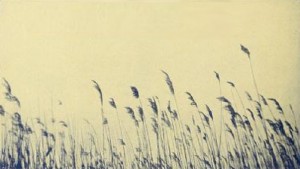
"The first on the list, Rushes, 300 ft., 16mm., filmed by J. V. D. Bucher, is an unusual effort, for it presents a continuity theme woven about a single subject, the wild rice plants in a marsh. It well illustrates what distinctive subjects for amateur movie making are offered by scenes close at hand that are often ignored. It is a satisfyingly beautiful study of the rushes, telling the story of their resistance to the assaults of nature, climaxed with their defeat by fire. The plan offered a large number of exposure problems which were successfully handled. Of particular beauty are the scenes of the burning rushes, taken with a fast lens, and fog effects and closeups of the plants' plume like heads, taken with filters against cloudy skies. The continuity motif used is simple and yet unites the subject into a complete entity rather than a series of disjointed sequences which happened to be taken of the same subject." Movie Makers, Dec. 1930, 758.
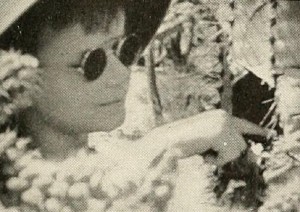
"Sahuaro Land, by Frank E. Gunnell, is as clever and painless a teaching film as one may find in many a classroom screening. Here, in a colorful Arizona cactus desert, we find the surefire ingredients of a boy and his dog. The boy is an enthusiastic nature student who, in the course of his explorations of the region, contrives to make sundry entries in his notebook, which find their way to the screen. These data are all so natural a part of the story, however, that the information conveyed does not assume the rather forbidding status of an instructional title in any case. The outdoor color work is excellent, and the viewpoints are well chosen. Mr. Gunnell's use of telephoto technique for making closeup studies of distant, inaccessible objects (such as the bloom atop a tall cactus) was particularly effective. We learned a lot from this film." Movie Makers, Dec. 1940, 604.
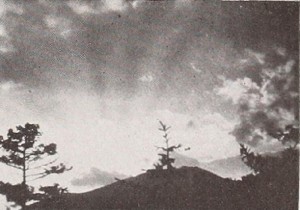
"September Peace, Robert P. Kehoe will tell you, is a film which not only made itself but named itself. It is, patently, a product of this world at war, the unconscious reaction of a sensitive spirit too long abraded by the rough edges of conflict. In it, Mr. Kehoe has found again the lyric loveliness of field and flower, the beneficent sturdiness of great trees, the warmth and beauty of the slanting sunlight. Unusually effective scoring plays its part in creating this moving attestation to the joys of peace." Movie Makers, Dec. 1943, 478.
"The unique wilderness of the Spatsizi Plateau, and the area's flora, fauna and scenery, as observed by guide-outfitter Tommy Walker. The film points out the negative impact of recent development in the area, and emphasizes the importance of preserving the Spatsizi. Mountain sheep, Stone sheep, Osborn caribou, moose, eagles, beaver, marmots, and many other wildlife species are shown" British Columbia Archives.
This film was produced at some time between 1956 and 1970.
"Springtime in California, by F. B. Judson, ACL, is an example of what every Kodachrome filmer would be proud to have made, because it studies Nature in her most extensively colorful manifestations, with complete freedom of camera viewpoint, offering closeups, medium shots and long views, all of them richly hued. This film indicates a delicate appreciation of color on the part of its maker, who. having a highly chromatic subject to his hand, did not let it run away with him. but kept it well under control, with the result that he delights with his management of pastel shades, where another might have omitted these and substituted garish footage so easily available in the highly colored California landscape. Mr. Judson is awarded Honorable Mention because he has done a typical thing — a Kodachrome landscape study — with restraint and liveliness, combining two qualities not always found together." Movie Makers, Dec. 1935, 553.
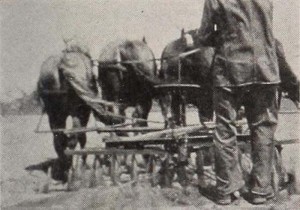
"Good organization of material and excellent photographic presentation of a familiar story make The Staff of Life, by Jack L. Krapp, an attractive and interesting film. Mr. Krapp has an eye for beauty in everyday subjects, and his progressive story of raising, harvesting and milling wheat leaves no detail uncovered in its searching, yet interesting story. Baking procedures are equally thoroughly covered, all in competent cinematography. For those who feel handicapped when working in 8mm., this film would be an inspiration, for certainly one is conscious of no limitation. A noteworthy feature is the clean cut handling of the titles." Movie Makers, Dec. 1939, 636.
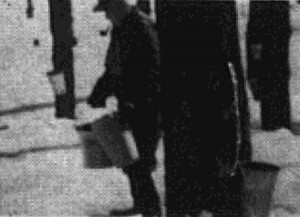
"As the snow begins to melt, the sugar maple begins to raise some of the water thru its roots. The rising water picks up a small amount of sugar to feed the tree in its new growth. We have learned how to rob the tree of some of this sweet water which we call sap. We boil off the excess water, leaving a syrup-maple syrup. The picture presents the story of gathering the sap and the reduction to syrup. A sweet subject and nicely handled" PSA Journal, Oct. 1962, 36.
An artistic interpretation of various natural environments.
"There Was a Tramp has, at first fade-in, a similarity to other tramp pictures, but the life breathed into the main character is what brings this film out of the ordinary and sets it apart from the rest. The story line becomes almost secondary to the acting of the tramp and his portrayal" PSA Journal, Aug. 1967, 36.
"These Bloomin' Plants, by Eugene L. Ritzmann, has been given Honorable Mention because of the striking technical tour de force which it represents. In it, Mr. Ritzmann has pictured, by means of a camera controlled by a mechanism of his own design and construction, the actual blossoming of some half dozen or more flowers. Through this device of time condensation, buds are seen bursting open before one's eyes, often in cascades of beauty which vividly suggest the magic of colored fireworks against a night sky. The technical management of this difficult and esoteric phase of photography was almost without flaw. In the opinion of the judges, however, Mr. Ritzmann failed to do full justice to his material, both in his editing and in his title treatment." Movie Makers, Dec. 1936, 551.
Total Pages: 6